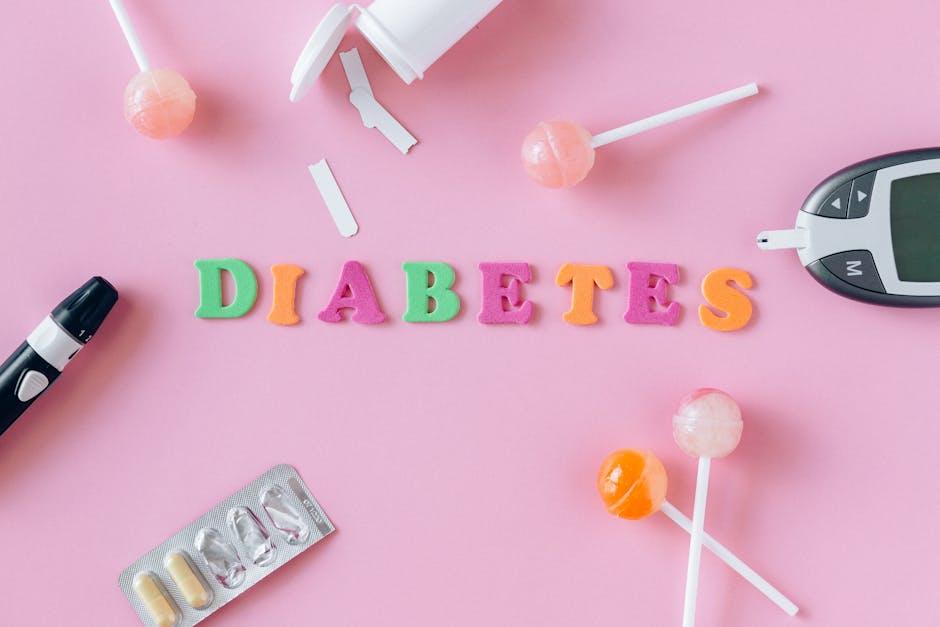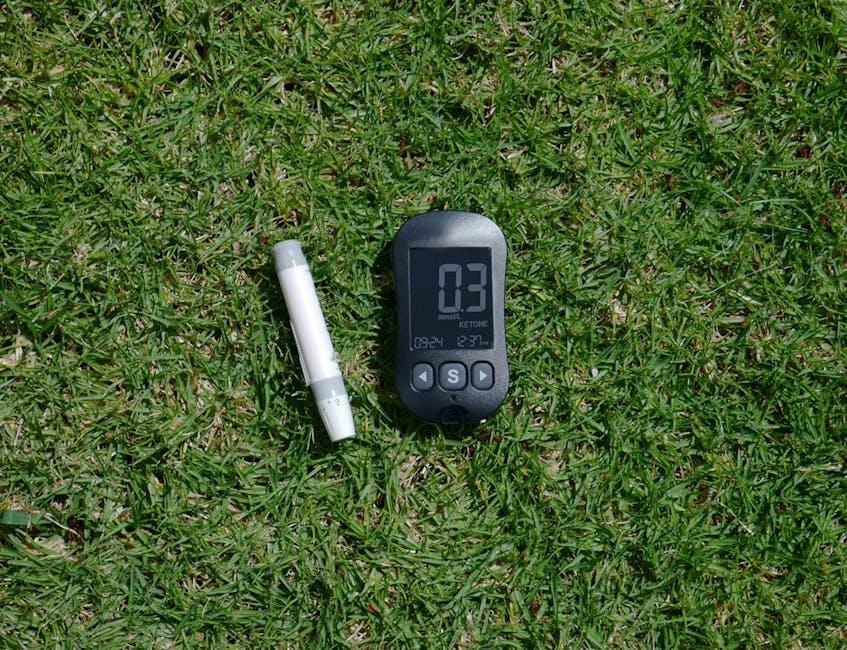In a world where chronic illnesses often seem like lifelong sentences, stories of transformation spark hope and curiosity. Among these, the journey of reversing type 2 diabetes through dietary changes has captured growing attention. Central to this conversation is the ketogenic diet—a low-carbohydrate, high-fat regimen that challenges traditional nutritional wisdom. This article delves into the compelling narratives behind keto’s role in diabetes reversal, exploring both the science and the personal triumphs that illuminate a path toward renewed health.
Table of Contents
- Understanding the Connection Between Keto Diet and Type 2 Diabetes
- How Ketogenic Eating Influences Blood Sugar and Insulin Resistance
- Personal Journey to Diabetes Reversal Through Keto Lifestyle
- Key Nutritional Guidelines for Safely Adopting a Keto Diet
- Monitoring Progress and Making Adjustments for Long-Term Success
- Q&A
- To Conclude

Understanding the Connection Between Keto Diet and Type 2 Diabetes
The ketogenic diet, known for its high-fat and ultra-low-carbohydrate approach, significantly alters the body’s metabolic state by encouraging fat as the primary fuel source instead of glucose. This switch can be particularly beneficial for individuals with type 2 diabetes, as it helps lower blood sugar levels and improve insulin sensitivity. By limiting carbohydrate intake, the diet reduces the demand for insulin, effectively stabilizing glucose spikes that are common in diabetic patients. Key mechanisms at play include:
- Reduction in dietary glucose, minimizing blood sugar fluctuations.
- Increased production of ketone bodies, which serve as an alternative energy source.
- Enhanced fat metabolism that supports weight loss, often a critical factor in managing type 2 diabetes.
Clinical studies and anecdotal evidence suggest that adopting a keto diet can sometimes lead to significant improvements in HbA1c levels and may reduce or eliminate the need for medication over time. It’s important to note that this diet requires careful monitoring and professional guidance to avoid potential side effects such as nutrient deficiencies or hypoglycemia. Below is a simplified comparison demonstrating typical impacts on blood sugar levels for someone on a standard diet versus a ketogenic diet over 24 hours:
| Time | Standard Diet (mg/dL) | Keto Diet (mg/dL) |
|---|---|---|
| Morning | 130 | 90 |
| Afternoon | 180 | 100 |
| Evening | 160 | 95 |
How Ketogenic Eating Influences Blood Sugar and Insulin Resistance
The ketogenic diet dramatically shifts the body’s primary fuel source from glucose to fat-derived ketones, effectively stabilizing blood sugar levels. By minimizing carbohydrate intake, the need for insulin decreases, allowing blood sugar to remain consistently low and reducing the spikes that typically exacerbate insulin resistance. This process helps break the vicious cycle of insulin overproduction and blood sugar fluctuations commonly seen in type 2 diabetes. As cells become more receptive to insulin, the body’s energy metabolism starts to normalize, often leading to improved glycemic control and decreased reliance on medication.
Key benefits of ketogenic eating on blood sugar and insulin resistance include:
- Reduction in fasting blood glucose levels
- Improved insulin sensitivity at the cellular level
- Lowered inflammation, which is linked to insulin resistance
- Decreased blood sugar variability, promoting metabolic stability
| Effect | Keto Impact |
|---|---|
| Blood Sugar | Consistently lower and stabilized |
| Insulin Levels | Reduced and balanced |
| Insulin Sensitivity | Enhanced cellular response |
| Inflammatory Markers | Significantly decreased |
Personal Journey to Diabetes Reversal Through Keto Lifestyle
Embarking on this lifestyle transformation was nothing short of revolutionary. Initially skeptical, I gradually embraced the ketogenic lifestyle, which fundamentally altered my approach to managing type 2 diabetes. The shift was not just about cutting carbs—it was about reclaiming control over my health. Consistent monitoring of blood sugar levels and adapting recipes to fit the keto framework became integral parts of my daily routine, turning challenges into rewarding milestones.
- Reduced dependency on medications
- Increased energy and mental clarity
- Significant and sustained weight loss
- Improved lab results indicating better insulin sensitivity
Tracking progress through tangible metrics motivated me to stay steady on the path. The table below outlines key improvements observed over six months:
| Metric | Before Keto | After 6 Months |
|---|---|---|
| Fasting Blood Glucose (mg/dL) | 160 | 95 |
| HbA1c (%) | 8.5 | 6.1 |
| Weight (lbs) | 210 | 175 |
These numbers don’t just represent data; they symbolize a journey of perseverance and renewed vitality. Adopting the keto lifestyle empowered me to rewrite my health narrative—proving that type 2 diabetes reversal is indeed achievable with holistic and dedicated effort.
Key Nutritional Guidelines for Safely Adopting a Keto Diet
Embarking on a ketogenic lifestyle requires more than just cutting carbs—it’s about embracing a balanced plan that meets your body’s needs while minimizing risks. Prioritizing high-quality fats such as avocados, olive oil, and nuts ensures sustained energy without raising blood lipids dangerously. Meanwhile, selecting a variety of low-carb vegetables can provide essential micronutrients and fiber to support digestion and overall well-being. Hydration also plays a crucial role; drinking plenty of water infused with electrolytes like sodium, potassium, and magnesium helps avoid common side effects such as dizziness and muscle cramps.
To maintain safety during this transition, it’s vital to monitor key health markers regularly. Here’s a quick snapshot of the essential nutrients to track and their approximate daily recommendations on keto:
| Nutrient | Daily Target | Key Sources |
|---|---|---|
| Net Carbs | < 30g | Leafy Greens, Berries |
| Protein | 1.2–2.0g/kg body weight | Meat, Fish, Eggs |
| Fats | 70–80% of calories | Olive Oil, Butter, Nuts |
| Electrolytes | Variable* | Salt, Avocado, Nuts |
* Adjustments may be required based on individual health status and activity levels.
Monitoring Progress and Making Adjustments for Long-Term Success
Tracking your metabolic markers and overall wellness is a critical part of sustaining the benefits of a ketogenic lifestyle. Regular monitoring not only informs you of your evolving insulin sensitivity and blood sugar levels but also guides timely adjustments to your macros and meal frequency. Consider incorporating tools such as continuous glucose monitors or simple fasting blood tests to gather data on how your body responds over time. This ongoing feedback loop empowers you to refine your diet with precision, ensuring it remains aligned with your unique physiology and health goals.
- Weekly blood glucose logs to spot trends
- Periodic ketone level checks to confirm ketosis
- Adjusting fat and protein intake based on energy and satiety
- Incorporating occasional carb refeed days when needed
| Parameter | Ideal Range | Adjustment Tips |
|---|---|---|
| Fasting Blood Glucose | 70-100 mg/dL | Reduce carb intake if levels rise |
| Blood Ketones | 0.5-3.0 mmol/L | Increase fat intake for deeper ketosis |
| HbA1c | Below 5.7% | Consult doctor if levels plateau |
Long-term success thrives on flexibility and self-awareness. As your body adapts, metabolic demands and lifestyle changes will necessitate tweaks to your routine. Periodically reassessing your physical activity, sleep patterns, and stress levels alongside your dietary strategy helps maintain harmony across all factors influencing blood sugar control. Embrace this dynamic approach rather than rigid adherence—this mindset not only supports diabetes reversal but cultivates a sustainable, vibrant way of living free from chronic illness constraints.
Q&A
Q&A: Keto Diet and Type 2 Diabetes Reversal Story
Q1: What is the keto diet, and how does it work?
A1: The keto diet is a low-carbohydrate, high-fat eating plan that shifts the body’s metabolism from burning glucose (sugar) to burning fat for energy, producing ketones in the process. By drastically reducing carb intake, the body enters a state called ketosis, which can help regulate blood sugar levels and improve insulin sensitivity.
Q2: Can the keto diet really reverse type 2 diabetes?
A2: While “reversal” of type 2 diabetes is a complex term, many individuals following a strict keto diet have experienced significant improvements in blood sugar control, reduction or elimination of diabetes medications, and in some cases, sustained normal glucose levels without medication. However, results vary, and medical supervision is crucial.
Q3: What makes the keto diet different from traditional diabetes diets?
A3: Traditional diabetes diets often emphasize balanced carbohydrate intake with controlled portions, while the keto diet drastically restricts carbs to about 5-10% of daily calories, focusing on fats and moderate protein. This substantial carb reduction is what distinguishes keto’s unique impact on blood sugar management.
Q4: Are there risks or side effects associated with the keto diet for diabetics?
A4: Yes, there can be risks such as hypoglycemia (low blood sugar), especially if medications aren’t adjusted, nutrient deficiencies if the diet isn’t well-planned, and potential keto flu symptoms during adaptation. It’s vital that individuals with diabetes start the keto diet under healthcare supervision.
Q5: What does a typical day of eating on a keto diet look like for someone with type 2 diabetes?
A5: A typical keto day might include eggs cooked in butter with spinach for breakfast, a lunch of grilled chicken salad with avocado and olive oil, and dinner featuring salmon with steamed broccoli and a cauliflower mash. Snacks could be nuts or cheese—foods low in carbs but rich in healthy fats and protein.
Q6: How quickly can someone expect to see changes in their diabetes management after starting keto?
A6: Some people notice improvements in blood glucose levels within days to weeks, but sustainable changes generally appear over months. Patience and consistency are key, and regular monitoring helps track progress and adjust the approach as needed.
Q7: Is the keto diet suitable for everyone with type 2 diabetes?
A7: Not necessarily. Certain individuals, such as those with kidney issues, pancreatitis, or on specific medications, may find keto unsuitable or even risky. Personal health status and preferences should guide dietary choices, ideally in partnership with healthcare professionals.
Q8: What role does lifestyle play alongside the keto diet in reversing type 2 diabetes?
A8: Diet is just one piece of the puzzle. Regular physical activity, stress management, adequate sleep, and routine medical care all contribute significantly to improving insulin sensitivity and overall health, enhancing the potential for diabetes reversal.
Q9: Can the benefits of the keto diet be maintained long-term?
A9: Many individuals sustain benefits by continuing a low-carb or modified keto lifestyle, but long-term adherence varies. Some people transition to a more balanced low-carb diet after reaching their goals, prioritizing variety and sustainability while maintaining blood sugar control.
Q10: Where can readers find more guidance if they want to try the keto diet for type 2 diabetes?
A10: Trusted sources include endocrinologists, registered dietitians specializing in diabetes, and reputable diabetes education programs. Books and online communities can offer support, but medical guidance is essential to tailor the keto diet safely and effectively.
To Conclude
In the ever-evolving landscape of health and wellness, stories of transformation like those found in the keto diet and type 2 diabetes reversal journey offer a beacon of hope and inspiration. While individual results may vary and medical guidance remains essential, these narratives invite us to reconsider the possibilities within our own lives. As science continues to explore the intricate relationship between nutrition and chronic disease, one thing remains clear: the path to better health is as unique as the stories we tell. Whether keto becomes a lifelong ally or a chapter in your story, the power to rewrite your health narrative is always within reach.

